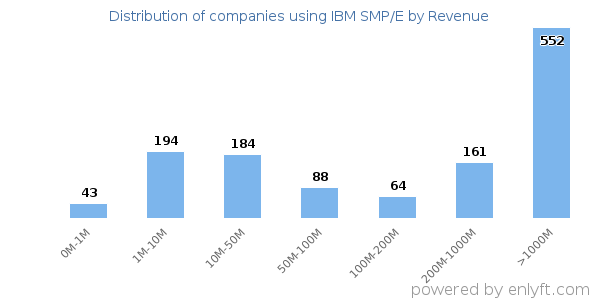Companies using IBM SMP/E
We have data on 1,264 companies that use IBM SMP/E. The companies using IBM SMP/E are most often found in United States and in the Information Technology and Services industry. IBM SMP/E is most often used by companies with >10000 employees and >1000M dollars in revenue. Our data for IBM SMP/E usage goes back as far as 8 years and 11 months.
If you’re interested in the companies that use IBM SMP/E, you may want to check out BMC Remedy Change Management and ServiceNow Change Management as well.
Who uses IBM SMP/E?
| Company | Accenture PLC |
| Website | accenture.com |
| Country | Ireland |
| Revenue | >1000M |
| Company Size | >10000 |
| Company | Infosys Ltd |
| Website | infosys.com |
| Country | India |
| Revenue | >1000M |
| Company Size | >10000 |
| Company | HP Development Company, L.P. |
| Website | hp.com |
| Country | United States |
| Revenue | >1000M |
| Company Size | >10000 |
| Company | International Business Machines Corporation |
| Website | ibm.com |
| Country | United States |
| Revenue | >1000M |
| Company Size | >10000 |
| Company | General Dynamics Information Technology |
| Website | gdit.com |
| Country | United States |
| Revenue | >1000M |
| Company Size | >10000 |
| Company | Website | Country | Revenue | Company Size |
|---|---|---|---|---|
| Accenture PLC | accenture.com | Ireland | >1000M | >10000 |
| Infosys Ltd | infosys.com | India | >1000M | >10000 |
| HP Development Company, L.P. | hp.com | United States | >1000M | >10000 |
| International Business Machines Corporation | ibm.com | United States | >1000M | >10000 |
| General Dynamics Information Technology | gdit.com | United States | >1000M | >10000 |
Target IBM SMP/E customers to accomplish your sales and marketing goals.
IBM SMP/E Market Share and Competitors in IT Change Management Software
We use the best indexing techniques combined with advanced data science to monitor the market share of over 15,000 technology products, including IT Change Management Software. By scanning billions of public documents, we are able to collect deep insights on every company, with over 100 data fields per company at an average. In the IT Change Management Software category, IBM SMP/E has a market share of about 38.1%. Other major and competing products in this category include:
IT Change Management Software
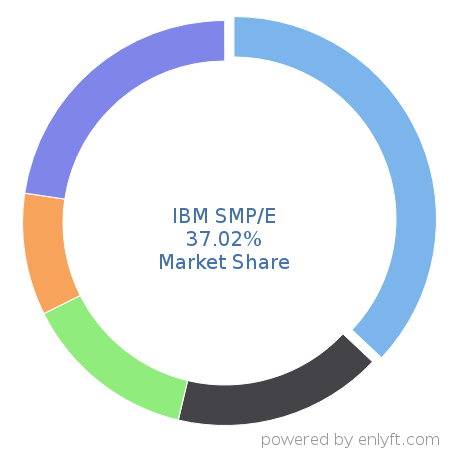

What is IBM SMP/E?
SMP/E (System Modification Program/Extended) is a tool designed to manage the installation of software products on z/OS system and to track the modifications to those products.
Top Industries that use IBM SMP/E
Looking at IBM SMP/E customers by industry, we find that Information Technology and Services (27%), Financial Services (9%), Computer Software (6%) and Banking (5%) are the largest segments.
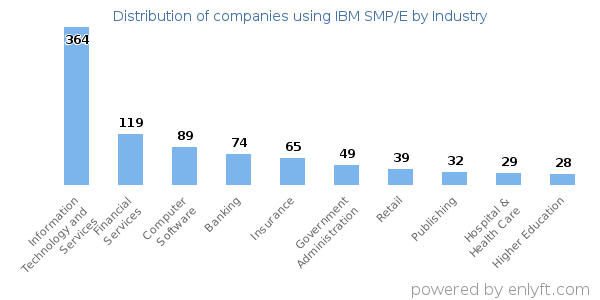
Top Countries that use IBM SMP/E
70% of IBM SMP/E customers are in United States and 5% are in United Kingdom.
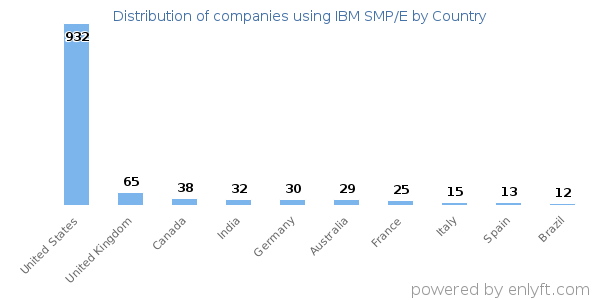
Distribution of companies that use IBM SMP/E based on company size (Employees)
Of all the customers that are using IBM SMP/E, a majority (52%) are large (>1000 employees), 18% are small (<50 employees) and 30% are medium-sized.
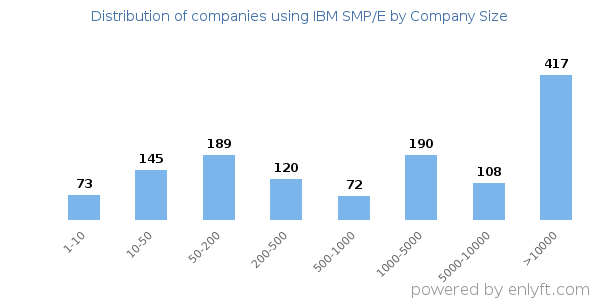
Distribution of companies that use IBM SMP/E based on company size (Revenue)
Of all the customers that are using IBM SMP/E, a majority (52%) are large (>$1000M), 31% are small (<$50M) and 12% are medium-sized.
